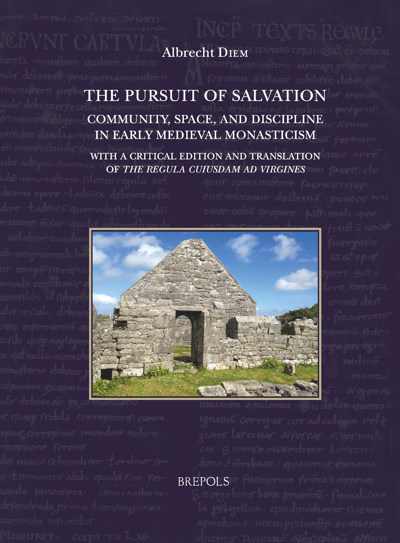
Western Monasticism ante litteram
The Spaces of Monastic Observance in Late Antiquity and the Early Middle Ages
Hendrik Dey, Elizabeth Fentress (eds)
- Pages: 387 p.
- Size:210 x 270 mm
- Illustrations:89 b/w
- Language(s):English
- Publication Year:2011
- € 95,00 EXCL. VAT RETAIL PRICE
- ISBN: 978-2-503-54091-7
- Paperback
- Available
- € 95,00 EXCL. VAT RETAIL PRICE
- ISBN: 978-2-503-54117-4
- E-book
- Available
"Chapeau! - and congratulations for a wonderful, and very impressive book. (...) This book makes an invaluable contribution to the study of early western monasticism. It contains a bulk of material and information on a fascinating and highly complex world, provokes thought, and offers a fresh perspective on the study of space." (Anne Müller, in The Journal of Medieval Monastic Studies, 1 (2012), p. 147-149)
"The concept of this volume, and its refreshingly intuitive approach to the problem of space, has resulted in a number of insights and new perspectives for specialist scholarship that transcend what historians usually imagine when talking about space and spatial experiences. As suggested in the introduction, the discussions touch upon the very core narrative of monastic development as it has been current for several centuries." (Steven Vanderputten, in: Sehepunkte, 13, Nr. 7/8 (15.07.2013))
"This is a provocative, enjoyable book--each article is a gem." (Carole Straw, in: Speculum, 88/3 (2013), p. 782)
"The book breaks new ground in its insistence that the monastic experience cannot be understood without reference to the physical and material circumstances in which it was located. The individual, well-illustrated case studies combine to provide a much more nuanced picture of the formative centuries of the monastic phenomenon in the west." (Alexander O'Hara, in: Early Medieval Europe, Vol. 21, Issue 3, p. 343-345)
"Il volume si presenta insomma come un mosaico di letture molto stimolanti che, pur entro un'impostazione d'insieme abbastanza nettamente schierata su una critica alla funzione poietica delle Regulae nella formazione degli insediamenti monastici, rimane però selore aperta alla ricerca di nuovi orizzonti di sviluppo per l'archeologia dei monasteri e non si trincera entro una visione meramente de-construttivista del rapporto tra fonti scritte ed evidenze materiali. Proprio la dichiarata percezione della complessità dei nessi fra queste due polarità rappresenta a mio avviso l'elemento di maggior ricchezza di tutta l'opera e denuncia l'intelligenza del lavoro dei suoi curatori." (Federico Marazzi, in: Archeologia Medievale 40, 2013, p. 464-466)
Space has always played a crucial part in defining the place that monks and nuns occupy in the world. Even during the first centuries of the monastic phenomenon, when the possible varieties of monastic practice were nearly infinite, there was a common thread in the need to differentiate the monk from the rest: whatever else they were supposed to be, monks were beings apart, unique, in some sense separate from the mainstream. The physical contours of monastic topographies, natural and constructed, are thus fundamental to an understanding of how early monks went about defining the parameters of their everyday lives, their modes of religious observance, and their interactions with the larger world around them. The group of eminent historians and archaeologists present at the American Academy in Rome in March, 2007 for the conference ‘Western monasticism ante litteram. The spaces of early monastic observance,’ whose contributions comprise the bulk of this volume, have sought to reconsider the theory, the practice and above all the spaces of early monasticism in the West, in the hope of creating a more complete picture of that seminal period, from the fourth century until the ninth, when notions of what it meant to be a monk were as numerous as they were varied and (often) conflicting.




